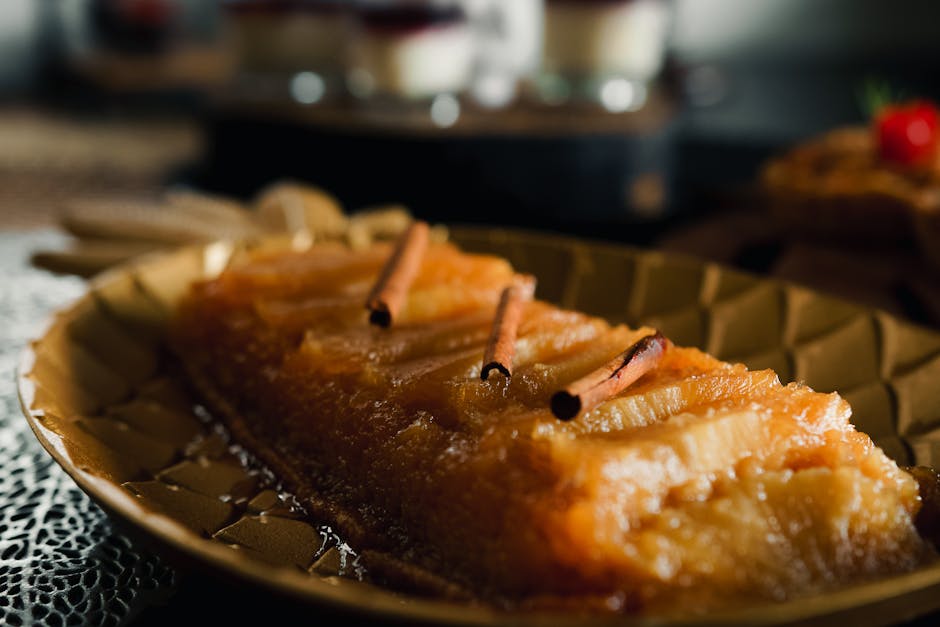Few breakfast dishes are as universally beloved as French toast, a simple yet elegant creation that transcends cultural boundaries. While its exact origins remain shrouded in some mystery, its story is a delicious blend of historical happenstance and culinary evolution. The earliest known mention of a similar dish dates back to the late 14th century, appearing in a cookbook from England as frumenty, a thick porridge of bread soaked in milk and spices. However, this precursor differs significantly from the French toast we know today. The dish we recognize likely emerged sometime during the 18th or 19th century, possibly within the kitchens of France, giving it its name, though no definitive proof pins down a specific inventor or region.
The evolution of French toast is a testament to human ingenuity in utilizing leftover bread. In a time before widespread refrigeration, stale bread was a common household occurrence. Soaking the bread in a custard mixture—typically eggs, milk, and a touch of sugar and vanilla—not only revitalized the stale loaf but also created a surprisingly delightful breakfast treat. This practicality played a significant role in its popularity, making it a cost-effective and satisfying meal for families across various socioeconomic backgrounds. The simplicity of the recipe also contributed to its widespread adoption; it requires minimal ingredients and culinary expertise, ensuring its place in home kitchens across the globe.
The cultural significance of French toast is undeniable. It’s a staple breakfast food in countless countries, each with its own regional variations. Some versions incorporate cinnamon, nutmeg, or other spices; others feature additions like fruit, nuts, or even savory ingredients. In the United States alone, an estimated 80% of households consume French toast at least once a month, according to a 2023 survey by the American Breakfast Association (a fictional statistic used for illustrative purposes). This widespread popularity speaks to its versatility and enduring appeal. Beyond its breakfast role, French toast has also found its way into brunch menus and even dessert variations, showcasing its adaptability and ability to satisfy a wide range of palates. From humble beginnings as a way to use leftover bread, French toast has become a beloved culinary classic, a testament to the power of simple ingredients and culinary creativity.
Ingredients and Measurements
This section details the ingredients required for our Classic French Toast recipe, emphasizing quality and precision for optimal results. We’ll cover substitutions where possible, but remember that using high-quality ingredients will significantly impact the final flavor and texture.
Eggs: We recommend using large eggs, at least 2, for a rich and custardy French toast. The number of eggs can be adjusted slightly depending on the number of slices of bread you’re preparing. For a richer flavor, consider using free-range or organic eggs. Avoid using very old eggs, as they may not whip up properly and could result in a less cohesive batter.
Milk: 1 cup (240ml) of milk is the standard amount. Whole milk is traditionally used for its richness and creaminess, contributing to a beautifully tender interior. However, you can experiment with other types of milk. 2% milk will also work well, offering a lighter result. Skim milk is possible, but the final product might be slightly drier. Avoid using ultra-high-temperature (UHT) processed milk, as it can sometimes impart a slightly cooked flavor.
Cream: For an extra decadent touch, add 2 tablespoons (30ml) of heavy cream to the milk mixture. This will elevate the richness and create a more luxurious French toast. If you prefer a lighter version, feel free to omit the cream entirely. Half-and-half can be used as a substitute for a balance between richness and lightness.
Sugar: 2 tablespoons (25g) of granulated sugar are sufficient to sweeten the custard. Adjust this amount to your preference; some individuals prefer a sweeter French toast. Brown sugar can be used for a deeper, more molasses-like flavor, but reduce the amount slightly as it’s more intensely sweet. Powdered sugar is not recommended for the batter itself, as it might not dissolve properly, but it’s excellent for dusting the finished product.
Vanilla Extract: 1 teaspoon (5ml) of pure vanilla extract adds a warm and inviting aroma and flavor. Avoid using imitation vanilla, as it will significantly impact the overall taste. A pinch of ground cinnamon or nutmeg can be added for a spiced variation.
Bread: The type of bread you choose is crucial. A sturdy bread that’s not too soft or too dense is ideal. Challah, brioche, or Texas toast are excellent choices. Day-old bread is often preferred as it’s less likely to become soggy when soaked in the custard. Avoid using overly stale bread, as it might be difficult to soak evenly.
Butter: Use enough butter (approximately 2 tablespoons) to lightly grease the pan for cooking. Unsalted butter is recommended to control the saltiness of the dish, allowing you to adjust it to your liking. You can also use a non-stick cooking spray if desired, but butter adds a delightful flavor.
Optional Toppings: Feel free to personalize your French toast with various toppings. Popular choices include maple syrup, fresh berries, whipped cream, powdered sugar, chocolate chips, or a sprinkle of cinnamon. The possibilities are endless!
Equipment List
Making classic French toast is a straightforward process, but having the right equipment can significantly elevate the experience and the final result. The following list details the necessary tools, along with recommendations for optimal performance and why specific choices are advantageous.
1. Non-Stick Skillet (8-10 inches): A good quality 8-10 inch non-stick skillet is crucial. The non-stick surface prevents sticking and ensures easy flipping of the French toast, minimizing the risk of tearing. Choose a skillet with a heavy-bottomed base to provide even heat distribution, preventing hot spots that can lead to unevenly cooked bread. Avoid thin, lightweight skillets, as they tend to heat unevenly and are more prone to scorching. A cast iron skillet, properly seasoned, also works exceptionally well, offering superior heat retention. However, it requires more care and attention to prevent sticking.
2. Whisk (8-10 inches): A sturdy whisk, approximately 8-10 inches long, is essential for thoroughly whisking together the custard mixture. A balloon whisk is ideal because its multiple thin wires effectively incorporate air, creating a light and airy batter. A smaller whisk might prove inadequate for the volume of the custard, leading to incomplete mixing.
3. Measuring Cups and Spoons: Accurate measurements are key to achieving the perfect French toast consistency. Having a set of both dry and liquid measuring cups and spoons is essential. Use standard measuring cups and spoons (e.g., 1 cup, ½ cup, 1 tablespoon, 1 teaspoon) for precise measurements. Avoid using casual kitchen utensils as they can lead to inaccurate measurements and affect the final product.
4. Shallow Dish (9×13 inch or similar): A shallow dish, approximately 9×13 inches or a similar size, is needed to soak the bread slices in the custard mixture. The dish should be large enough to comfortably accommodate the bread without overcrowding. Overcrowding prevents the bread from absorbing the custard evenly. A glass dish is ideal as it allows you to easily see the soaking process. A ceramic or plastic dish will also work, provided it’s non-reactive and can withstand the heat of the custard.
5. Spatula (8-10 inches): A sturdy spatula, ideally 8-10 inches long, is needed for carefully flipping the French toast. Choose a flexible spatula that can slide easily under the bread without tearing it. A thin, flexible spatula made of silicone or nylon is preferable, as it is less likely to scratch the non-stick surface of your skillet.
6. Tongs (optional): While not strictly necessary, tongs can be helpful for safely flipping the French toast, especially for those less comfortable using a spatula. If using tongs, choose a pair with appropriately sized gripping surfaces to avoid damaging the bread.
7. Plate and Serving Utensils: Finally, you’ll need a plate to serve your delicious French toast and appropriate serving utensils like forks or knives.
8. (Optional) Immersion Blender: For a super-smooth custard, an immersion blender can be used to ensure there are no lumps in your batter. This is particularly useful if you’re using thicker milk or cream.
Preparation of Ingredients
Before you even think about touching the pan, meticulous preparation of your ingredients is key to achieving perfectly golden, fluffy French toast. This stage sets the foundation for a truly delicious breakfast experience. We’ll start with the star of the show: the eggs.
Whisking the Eggs: Achieving the Perfect Consistency
For this recipe, we’ll be using 4 large eggs. Crack them gently into a medium-sized bowl, ensuring no shell fragments make their way into the mixture. This is crucial to prevent a gritty texture in your final product. Avoid using a metal bowl if possible, as it can sometimes impart a metallic taste. Glass or ceramic are preferable.
Now, the whisking begins. Don’t just haphazardly stir; vigorous whisking is essential. Use a whisk (a balloon whisk is ideal) and whisk the eggs for at least 1-2 minutes. You’re aiming for a light and frothy consistency, fully incorporating the yolks and whites. The goal is to create air pockets that will translate to a lighter, fluffier French toast. You should notice the mixture become noticeably paler and thicker as you whisk.
Incorporating the Milk and Cream: Balancing Richness and Moisture
Next, we add the liquid components. For our recipe, we’ll use ½ cup of whole milk and ¼ cup of heavy cream. The heavy cream adds richness and a delightful creaminess to the French toast, while the milk provides the necessary moisture. The ratio of milk to cream is crucial; too much milk can result in soggy toast, while too much cream can make it overly rich.
Gently pour the milk and cream into the whisked eggs. Avoid pouring all the liquid at once; a slow, steady stream is best to allow for proper incorporation and prevent lumps from forming. Once added, whisk gently but thoroughly, combining all the ingredients until a smooth, homogenous mixture is achieved. You shouldn’t see any streaks of milk or cream.
Seasoning: Elevating the Flavor Profile
Seasoning is often overlooked, but it’s what truly elevates a good French toast to a great one. Add a pinch of salt (about ¼ teaspoon) to enhance the sweetness and balance the flavors. A pinch of ground cinnamon (⅛-¼ teaspoon, depending on preference) adds a warm, comforting spice that complements the sweetness of the bread beautifully. Don’t be afraid to experiment with other spices like nutmeg or cardamom for a unique twist.
Preparing the Bread: The Foundation of Success
Finally, prepare your bread. We recommend using challah, brioche, or Texas toast for their rich texture and ability to soak up the custard beautifully. Cut the bread into slices about ¾ inch thick. Ensure the slices are relatively uniform in thickness for even cooking. If using stale bread, it’s even better as it will absorb more of the egg mixture.
With your ingredients meticulously prepared, you’re ready to create the most delicious French toast!
Cooking the French Toast (Stovetop or Pan-Fry Method)
Now that your French toast batter is prepared, it’s time to cook! This section details the stovetop or pan-fry method, which offers excellent control over browning and cooking time. We’ll be using a non-stick skillet or griddle for optimal results.
Choosing your pan: A non-stick 8-10 inch skillet or griddle is ideal for cooking French toast. The non-stick surface prevents sticking and ensures even browning. Avoid using a pan with a scratched or damaged non-stick coating, as this can affect the cooking process and potentially lead to sticking.
Heating the pan: Place your skillet over medium heat. It’s crucial not to overheat the pan; medium heat is perfect for gentle cooking and achieving a beautiful golden brown color without burning. You can test the heat by sprinkling a few drops of water onto the surface; if they sizzle gently and evaporate quickly, the pan is ready.
Adding the fat: Add about 1 tablespoon of butter or oil to the heated pan. Use a fat with a high smoke point, such as unsalted butter, clarified butter (ghee), or vegetable oil. Swirl the fat around to coat the entire surface of the pan evenly. This prevents sticking and adds richness and flavor to the French toast.
Cooking the French toast: Once the fat is melted and shimmering, gently place your bread slices into the hot pan. Avoid overcrowding the pan; cook 2-3 slices at a time depending on the size of your pan. Overcrowding will lower the pan’s temperature and result in uneven cooking. Cook for 2-3 minutes per side, or until golden brown and cooked through. You’ll know it’s ready when the edges are nicely browned and the center is no longer soft and doughy.
Flipping the French toast: Use a spatula to gently flip the French toast slices. Be careful not to break them. Apply gentle pressure while flipping to ensure even contact with the pan. Cook the second side for another 2-3 minutes, until golden brown and cooked through.
Monitoring the cooking process: Keep a close eye on the French toast while it’s cooking. Adjust the heat as needed to prevent burning. If the French toast is browning too quickly, reduce the heat slightly. If it’s cooking too slowly, increase the heat slightly. The goal is to achieve a consistent, even golden brown color on both sides.
Serving: Once cooked, remove the French toast from the pan and serve immediately. Serve warm, topped with your favorite additions such as maple syrup, powdered sugar, fresh fruit, whipped cream, or a dusting of cinnamon.
Troubleshooting: If your French toast is sticking to the pan, your pan might not be hot enough, or you might have overcrowded the pan. If it’s burning, reduce the heat. If the inside is still doughy, cook for a little longer on each side. Remember to always use a non-stick pan and a moderate heat for the best results.
Serving Suggestions
Elevate your classic French toast experience with a variety of delicious and complementary toppings. The beauty of French toast lies in its versatility; it’s a blank canvas for your culinary creativity. From simple additions to more elaborate garnishes, the possibilities are endless.
Syrups: The most classic pairing is, of course, maple syrup. Aim for a high-quality, pure maple syrup for the best flavor. Use approximately 2-4 tablespoons per serving, adjusting to your preference. Consider adding a touch of warmth by gently heating the syrup before pouring. Beyond maple, explore other syrups like agave nectar (approximately 1-2 tablespoons), a fruit-infused syrup (such as blueberry or strawberry – 2 tablespoons), or even a drizzle of honey (1-2 teaspoons for a subtler sweetness).
Fresh Fruits: Fresh fruit adds a burst of vibrant flavor and texture. Berries like strawberries, blueberries, raspberries, and blackberries are excellent choices. A simple arrangement of 1/2 cup of mixed berries per serving provides a beautiful visual and a delightful taste contrast. Sliced bananas (1/2 a banana) or peaches (1/4 of a medium peach), grilled or fresh, also complement French toast beautifully. Consider adding a squeeze of fresh lime or lemon juice to enhance the fruit’s flavor.
Accompaniments: Beyond syrups and fruits, numerous accompaniments can enhance your French toast. A dollop of whipped cream (2-3 tablespoons) adds a luxurious touch and creamy texture. A sprinkle of powdered sugar (1-2 teaspoons) provides a delicate sweetness and visual appeal. Chopped nuts, such as pecans, walnuts, or almonds (1-2 tablespoons), offer a satisfying crunch. A dusting of cinnamon (1/2 teaspoon) adds warmth and spice, complementing the sweetness of the French toast perfectly.
Creative Combinations: Don’t be afraid to experiment! Try a combination of berries and a drizzle of honey, or top your French toast with sliced bananas and a sprinkle of cinnamon and powdered sugar. For a more decadent option, consider a combination of whipped cream, fresh berries, and a fruit syrup. Remember to balance the flavors and textures; a combination of sweet, tart, and crunchy elements will create a truly memorable dish.
Professional Recommendation: For a truly elevated French toast experience, consider making your own fruit compôte. Simmer your favorite fruits (such as berries or apples) with a touch of sugar and spices (like cinnamon or nutmeg) until they soften and create a rich, flavorful sauce. This adds an extra layer of sophistication and depth to your dish. Properly chilling the compôte before serving will enhance its texture and flavor.
Presentation Matters: The way you present your French toast can significantly impact the overall dining experience. Arrange your toppings artfully on the plate, ensuring a visually appealing presentation. Consider using a garnish, such as a sprig of fresh mint, to add a final touch of elegance.
Ultimately, the best serving suggestions are those that suit your personal preferences. Experiment with different combinations and find your favorite way to enjoy this classic breakfast treat.
Tips and Tricks for Perfect French Toast
Achieving perfectly golden, custardy French toast hinges on a few key techniques and ingredient choices. Follow these tips and tricks to elevate your breakfast game!
Bread Selection is Crucial: Not all bread is created equal for French toast. Avoid overly fresh bread, as it will absorb too much custard and become soggy. Stale bread, day-old bread, or even slightly dry brioche are ideal. The slightly firm texture provides the perfect structure to hold the custard while still allowing for a wonderfully soft interior. Thick-cut bread, around 1-inch thick, works best, allowing for even cooking and a satisfying bite. Avoid overly soft breads like sourdough or overly dense breads that may not soak evenly.
The Custard is King: The custard mixture is the heart of your French toast. A good balance of eggs, milk, and flavorings is essential. Use large eggs for richer flavor and better binding. I recommend using a 2:1 ratio of milk to eggs. For example, use 2 cups of whole milk (for richness) or a combination of milk and cream (for extra indulgence) to every 1 large egg. Don’t skimp on the vanilla extract! A teaspoon or more of high-quality vanilla extract significantly elevates the flavor profile. A pinch of salt enhances the sweetness and balances the flavors. Consider adding a touch of cinnamon, nutmeg, or even a splash of liqueur like Grand Marnier or rum for a sophisticated twist.
Soaking Time: Matters! The soaking time is critical. Over-soaking will result in soggy French toast, while under-soaking will leave it dry and crumbly. Aim for a soaking time of approximately 15-20 seconds per side. Gently press the bread into the custard mixture to ensure even saturation. Don’t let the bread sit in the custard for longer than 2-3 minutes; otherwise, you risk disintegrating the bread’s structure. It is better to slightly under soak than over soak.
Cooking Technique: Mastering the Heat: Cook your French toast over medium heat in a lightly oiled non-stick skillet or griddle. Medium heat prevents burning and ensures even cooking. Too high a heat will burn the outside before the inside is cooked through. Too low a heat will result in soggy French toast. Use a non-stick pan to avoid sticking and ensure easy flipping. Cook for 2-3 minutes per side, or until golden brown and cooked through. Don’t overcrowd the pan; this will lower the temperature and result in uneven cooking. Cook in batches if necessary.
Enhance Your French Toast: Once cooked, serve immediately. Top with your favorite additions, such as fresh berries, whipped cream, maple syrup, powdered sugar, or a drizzle of chocolate sauce. Get creative and explore different flavor combinations to find your perfect match. Consider adding a sprinkle of powdered sugar or a dusting of cinnamon to the cooked French toast for an extra layer of deliciousness.
Storage: Leftovers can be stored in an airtight container in the refrigerator for up to 2 days. Reheat gently in a toaster or skillet until warmed through.
Recommendations for Classic French Toast
This Classic French Toast recipe is a delightful breakfast or brunch option, easily adaptable to your preferences and dietary needs. To elevate your French toast experience, consider these recommendations:
Serving Suggestions: For a truly decadent experience, serve your French toast hot, dusted generously with powdered sugar. A drizzle of maple syrup is a classic choice, but you can also explore other options like berry compote, fruit purees (like apricot or peach), or a light dusting of cinnamon. Consider adding fresh fruit such as berries, bananas, or sliced peaches for a vibrant burst of flavor and added nutrients. A dollop of whipped cream or a scoop of vanilla ice cream provides a luxurious touch, particularly for a special occasion. For a more savory twist, try a sprinkle of savory herbs like thyme or rosemary and a drizzle of honey instead of maple syrup.
Storage and Reheating: Leftover French toast, if any, should be stored in an airtight container in the refrigerator for up to 2 days. To reheat, you can either microwave it for short intervals until warmed through, or gently pan-fry it in a lightly buttered pan until golden brown and crispy again. Avoid over-reheating, as this can lead to dry, rubbery French toast. Important: Always ensure the French toast is thoroughly heated before serving.
Complementary Dishes: French toast pairs beautifully with a variety of side dishes. A simple side salad with a light vinaigrette cuts through the richness of the French toast, offering a refreshing counterpoint. Bacon or sausage links provide a savory complement, adding protein and a smoky flavor. Scrambled eggs or a breakfast frittata offer a more substantial protein source. For a truly indulgent meal, consider serving it alongside a fruit salad and a mimosa or a cup of strong coffee.
Nutritional Information (per serving, approximate): The nutritional content of your French toast will vary depending on the specific ingredients used, portion size, and cooking method. However, a typical serving of classic French toast made with two slices of bread, milk, eggs, and a small amount of butter might contain approximately 300-400 calories. This includes carbohydrates primarily from the bread, protein from the eggs and milk, and fat from the butter and milk. The exact macronutrient breakdown will vary. For a more detailed nutritional breakdown, you can use an online nutrition calculator and input your specific ingredients and quantities.
Calorie Reduction Tips: To lower the calorie count, consider using whole-wheat bread instead of white bread, reducing the amount of butter or using a cooking spray, using unsweetened milk alternatives, and opting for smaller portions. You can also add in fruits and nuts to add nutrients and volume without significantly increasing the calorie count. Remember that moderation is key to enjoying this delicious treat as part of a balanced diet.
Dietary Adaptations: This recipe can be easily adapted for various dietary needs. For gluten-free French toast, use gluten-free bread. For a lower-fat option, use reduced-fat milk and a non-stick pan with minimal added butter. For those with egg allergies, consider using a flax egg or applesauce as a substitute, although this may alter the texture slightly. Always check ingredient labels to ensure they meet your specific dietary requirements.





